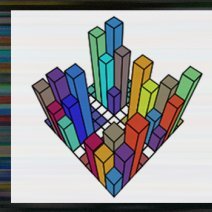Clade diversification dynamics and the biotic and abiotic controls of speciation and extinction rates.
Robin Aguilée, Fanny Gascuel, Amaury Lambert, Régis Ferrière.
Abstract
How ecological interactions, genetic processes, and environmental variability jointly shape the evolution of species diversity remains a challenging problem in biology. We developed an individual-based model of clade diversification to predict macroevolutionary dynamics when resource competition, genetic differentiation, and landscape fluctuations interact. Diversification begins with a phase of geographic adaptive radiation. Extinction rates rise sharply at the onset of the next phase. In this phase of niche self-structuring, speciation and extinction processes, albeit driven by biotic mechanisms (competition and hybridization), have essentially constant rates, determined primarily by the abiotic pace of landscape dynamics. The final phase of diversification begins when intense competition prevents dispersing individuals from establishing new populations. Species’ ranges shrink, causing negative diversity-dependence of speciation rates. These results show how ecological and microevolutionary processes shape macroevolutionary dynamics and rates ; they caution against the notion of ecological limits to diversity, and suggest new directions for the phylogenetic analysis of diversification.
Nat Commun. 2018 Aug 1 ;9(1):3013. doi : 10.1038/s41467-018-05419-7.


